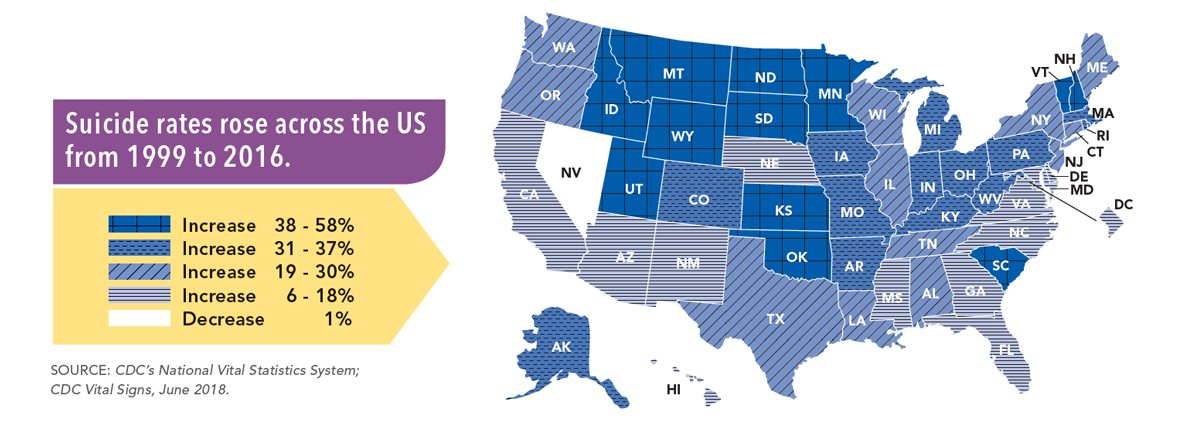The decision to close a statewide crisis hotline has never looked more faulty than with the news from the Centers for Disease Control that the rate of suicides in Minnesota is among the most severe in the country.
The rate jumped 40.6 percent from 1999 to 2016, the CDC said in its report. Only six states — Idaho, Kansas, North Dakota, South Dakota, Vermont, and Utah — registered a more dramatic jump. Nationwide, deaths by suicide are up 30 percent.
The CDC says 42 percent of those who took their own lives, did so because of a relationship problem, 29% had a crisis within the previous two weeks, 28% had substance abuse issues. It acknowledged, of course, that there may have been multiple reasons. It said more than half did not have a known mental health condition, although it acknowledges it doesn’t have complete confidence in that statistic.
“This is essentially a problem everywhere—a problem that’s getting worse,” says Dr. Anne Schuchat, principal deputy director of CDC.
What can states do? The CDC provided suggestions, none of which included “shutting down crisis hotlines.”
Identify and support people at risk of suicide.
• Teach coping and problem-solving skills to help
people manage challenges with relationships, jobs,
health, or other concerns.
• Promote safe and supportive environments. This
includes safely storing medications and firearms to
reduce access among people at risk.
• Offer activities that bring people together so they feel
connected and not alone.
• Connect people at risk to effective and coordinated
mental and physical healthcare.
• Expand options for temporary assistance for those
struggling to make ends meet.
• Prevent future risk of suicide among those who have
lost a friend or loved one to suicide
It also said the mental health system could make mental health care more affordable and available.
More information: BeThe1To

